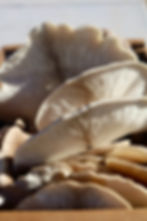Rooted in deep research of Yunnan’s art, architecture, and cultural traditions, every design decision was shaped by local values. From the development of our sustainable MykoBrick material to our architectural vision, our work is dedicated to preserving Yi heritage and contributing meaningful, eco-conscious innovations to the community.

Designing with Cultural Intention
This project is deeply inspired by the art, symbolism, and traditions of the Yi people. From textile patterns to architectural forms, we’ve studied and honored local traditions throughout the design process. Visit the Yunnan Culture Page to explore these traditions in more depth.
Mykos is more than a concept—it aims to realize a real-world initiative shaping future homes and sustainable living in Yunnan. Through fieldwork, interviews, and ongoing dialogue with Yi community members and local farmers, we’ve tailored every aspect of our work to reflect their values, needs, and concerns. Each element is created with the intention to support—not disrupt—a vibrant culture that already holds deep-rooted wisdom.
Who is Behind Mykos?




The Mykos Story:
From Yunnan, For Yunnan
A short film about the vision, process, and people working towards building the world’s first mycelium village — where culture, design, and sustainability come together in Yunnan, China.
The Mykos Story: From Yunnan For Yunnan
A short film about the vision, process, and people building the world’s first mycelium village — where culture, design, and sustainability come together in Yunnan, China.
Building a regenerative village from mykobricks, culture, and community.





Rooted in the Cultural and Ecological Heart of China
Yunnan is a global fungal biodiversity hotspot with nearly 900 edible mushroom species and deep cultural ties to mushroom foraging and ritual. The ecovillage, by invitation, will be located on a Yi mushroom farm and built in traditional Yi architectural style — celebrating and preserving the region’s ethnic identity while creating economic and ecological opportunity.

An International Team Bridging Biodesign, Architecture, and Local Knowledge
This international effort is led by:
-
Dr. Danting Sun (Yunnan Arts University)
-
Dr. Christina Cogdell (UC Davis Biodesign)
-
Dr. Valeria La Saponara (UC Davis Engineering)
-
Chris Maurer (redhouse studio, creator of MycoHAB)
-
Students from Yunnan Arts University's Environmental Design Department and the University of California Davis's biodesign program
-
Yi mushroom farmers and community members from Yunnan
The Mykos Ecovillage vision is made possible through collaboration across disciplines and borders — combining biodesign, architectural innovation, material science and cultural wisdom from Yunnan’s communities.
-

Honoring Traditions, Creating Opportunity: How the Ecovillage Uplifts Local Communities
Mykos is rooted in partnership. It celebrates Yunnan’s diverse ethnic traditions, supports local artisans, and opens new economic pathways through eco-tourism, cultural exchange, and skill-building in sustainable design.
By turning agricultural waste into building materials, the Mykos Ecovillage offers a carbon-negative alternative to burning crop residues. It also promotes economic empowerment through tourism, artisan production, and sustainable construction — all while preserving Indigenous knowledge and local identity.

A First-of-Its-Kind Mykobrick Village Designed for a Regenerative Future
Mykos is an invited collaboration to build a structural mycelium ecovillage on a mushroom farm in Yunnan, China. Early designs feature a visitor center, exhibition gallery, a small research center, and overnight BnBs for visitors.
Led by Yunnan Arts University, University of California Davis, and redhouse studio architecture, the project uses mykobricks—made from agricultural waste and mushroom roots—to construct sustainable housing inspired by traditional Yi architecture.
Mykobrick
Rooted in Waste. Built to Last.
In partnership with regional mushroom farmers, we're transforming agricultural waste into
high-impact, eco-friendly materials and fueling a circular bioeconomy that reimagines what's possible in architecture.

Mykos & the Global Goals
Every mykobrick we cultivate supports a bigger mission. The Mykos Ecovillage advances multiple UN Sustainable Development Goals by transforming agricultural waste into sustainable building materials, collaborating with rural mushroom farmers, and exploring regenerative design that prioritizes health, equity, and environmental care.


© 2025 by Mykos. Created on Wix Studio.

